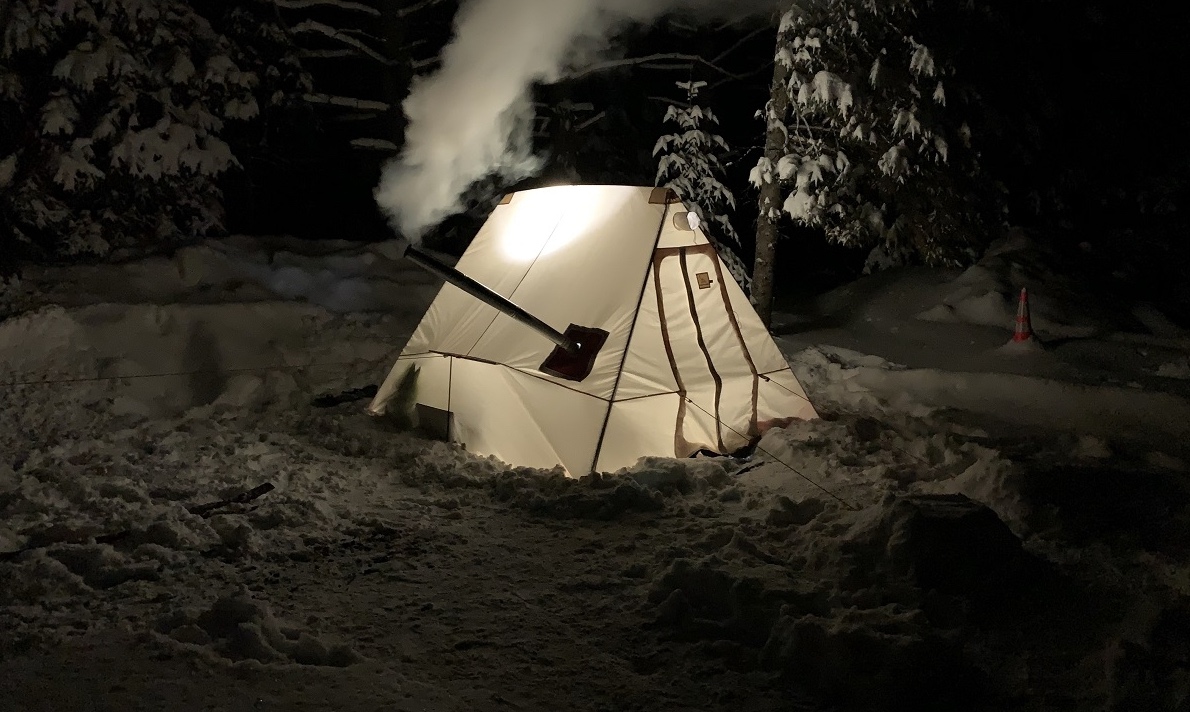Camping is not just for the spring, summer, or fall, as many people would believe. Even though temperatures can get really low during the winter months, winter camping can still be a lot of fun, particularly if you know how to heat tent in winter.
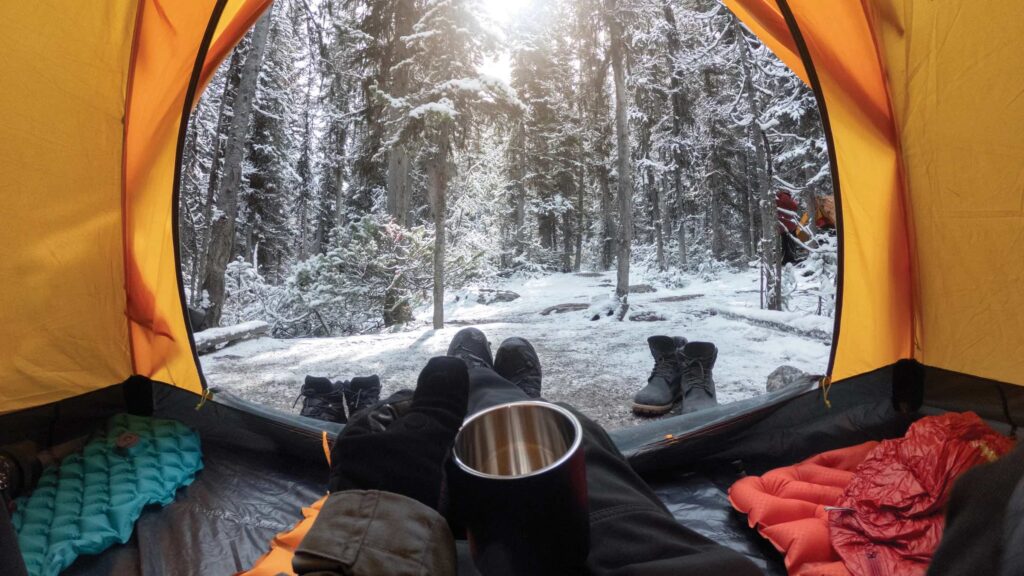
There are many different ways to make your winter adventure comfortable even in the lowest weather. I described some of them in this article for you.
After you use a few tips described here and master how to heat a cold tent, I am sure you will fall in love with winter camping. No reason to stay home – time to enjoy yourself during the most wonderful time of the year!
5 Helpful Tips On How To Heat Tent In Winter
Winter camping may be really comfortable with the correct camping gear, even though it might not be the same as summer camping.
Although winter tents, insulated sleeping pads, and sleeping bags rated at 0°F will all help keep you warm, there are those days when you might need a bit more. Here are a few of my favorite techniques for keeping myself warm.
1. Get a Suitable Tent for Low Temperatures
First of all, you should start with a warm tent while trying to heat a tent in chilly weather. You can create as much heat as you like, but if it just escapes via a non-insulated tent’s construction, it is just not going to work.
There are a few types of tents you should use when cold weather camping.
Hot Tent
A hot tent is a tent designed to accommodate a wood-burning stove. It is a tent with a stove jack to pass a chimney through in order to install a wood burning stove; any tent without one won’t work.
Hot tents are most frequently canvas tents made for usage in cold climates.
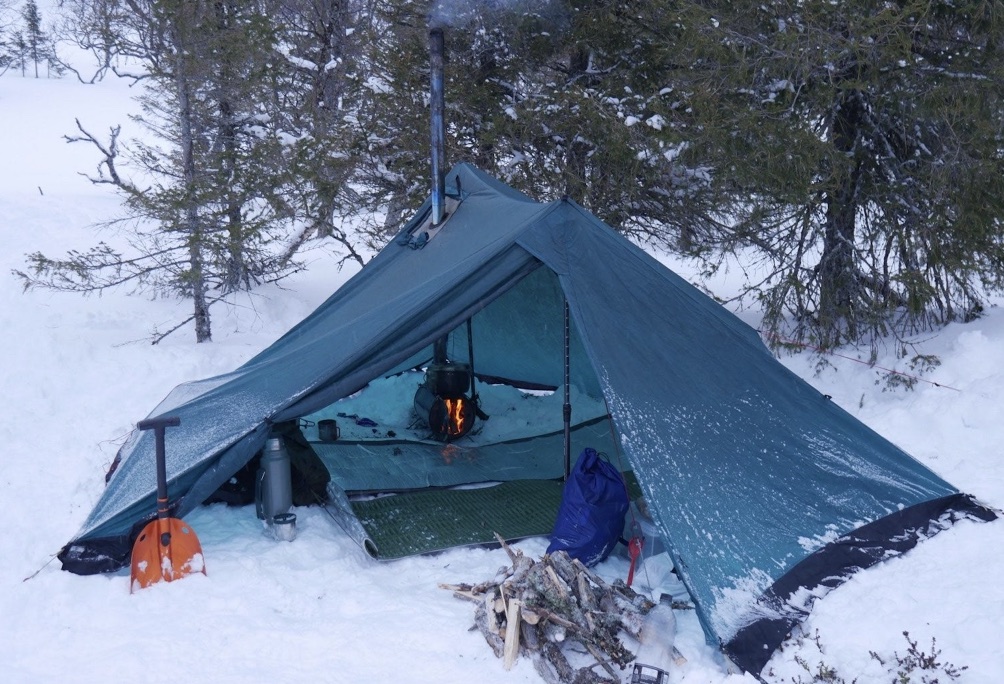
Hot tents are designed specifically for this use, thus they have a modest degree of breathability and are frequently sprayed with fire-proofing.
Well-Insulated Tent
Insulated tents are designed differently. They have a few layers of breathable cloth with insulation between them. It protects the tent’s inside sleeping space from changes in outdoor temperature.
Insulated tents can be used during summer camping trips as well as in winter. The insulation works to keep heat in during the winter, but it also keeps heat out during the summer.
Four-Season Tent
The best choice is to use four-season tents. They are made specifically to endure cold weather camping vacations. They can be of different sizes and constructions.
Four-season tents have walls made of nylon or polyester for optimal insulation and to block out powerful gusts of wind, as well as sturdy and reliable frame designs constructed of aluminum poles.
To avoid condensation, they also contain opening vents and vestibules. The weight of more recent tents can be up to six pounds, and some even include additional pole sections with better construction for greater stability and security.
2. Insulate Your Tent
In case you do not have a well-insulated tent, there are ways to insulate your tent.
Insulating your tent you should start from the ground going up to the walls and roof outside and inside your tent.
Be very careful to provide enough ventilation if you decide to insulate your tent yourself so that it doesn’t become stuffy or even oxygen deficient while you sleep.
Here I am describing the process of insulating a tent briefly. If you want to read about it in greater details, please read my article about how to insulate a tent for winter camping.
Ground Insulation
Cold ground is where heat will constantly leak out during the night, so adding even a thin layer between your tent and the ground is crucial. Before setting up your tent, spread out a tarp or a footprint.
You may also spread a layer of soft pine branches or dry dead leaves, then place your tarp on top of it for even more insulation. To avoid sleeping on any lumps, make it as even as you can.
Tent Walls and Roof Insulation
Use a tarp, space blankets, foil, or even bubble wrap to cover the walls and top of your tent. Make sure you do not cover your tent completely. You should leave proper ventilation to have enough oxygen during the cold night.
Inside Tent Insulation
Although it might take some of your time, this technique of covering the tent walls and floor is one of the most effective. You can use reflective foil, or space blanket, or any other material that absorbs heat and reflects it back.

3. Choose Correct Location To Place Your Tent
The warmest places to camp are on benches and outcroppings above valley bottoms because cold air rises and settles in low areas. Additionally, south-facing locations provide more light for longer days.
Hide from the wind. Windbreakers can be made using trees, stones, or even a sheet strung between two trees.
Examine the trees. Branches that are dead or thickly covered in snow may fall and cause damage or injury.
For additional defense against snowstorms, you may also build a snow wall by cutting bricks from compacted snow. Stack them at least three feet high and a few feet past the tent on both sides.
Preferably stay away from avalanche terrain. Be conscious of what is above you and what would happen if a slide occurs.
4. Keep Yourself Warm
The camping gear and clothing you have should be your first priority. Without the proper equipment, it can be challenging to stay warm. Following that, there are a few ways to stay warm all night in a chilly tent.
- Insulate the tent floor: Sleeping pads or tent mat is primarily used to create a few layers of insulation between you and the cold ground. Without one, the ground will continuously rob you of warmth.
- Get a well-insulated sleeping bag: You cannot just use any sleeping bag when cold weather camping. You should get a warmer sleeping bag than you think you need. In the United States, you can usually get away with a sleeping bag that is rated for 0°F.
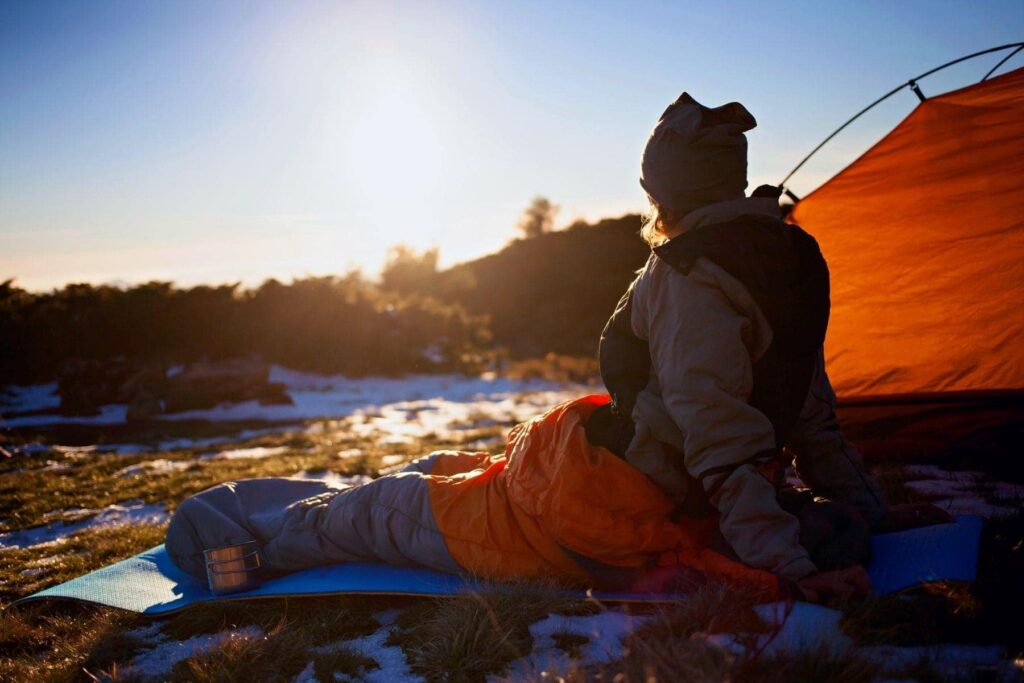
- Choose quality clothing: The more layers of clothing you have, the better. Maintaining your body’s temperature is simpler than trying to rewarm it after becoming chilled. I advise putting on several layers and removing them gradually if you start to feel warm.
- Keep yourself dry: Keep your wet gear outside and ventilate your tent regularly. Dampness will make you cold at night.
5. Get Indoor-Safe Portable Tent Heater
Tent heaters will not help much if your tent has thin walls or very little insulation. Camping heaters should only be used to supplement your entire sleeping system. So, before choosing a nice portable tent heater, make sure you chose the right location where you placed your tent and improved your tent.
I described the most popular types of tent heaters below. Besides, I described safety guidelines to use your heater properly.
Electric Heaters
If you are RV camping or camping at a site with power and want to put an extension cord inside your tent, there are a ton of options for small electric heaters.
An electric blanket is a nice alternative to an electric heater. You may use it either to pre-heat your sleeping bag or leave it on to keep you warm during the night. Please follow the safety guidelines while using an electric blanket, otherwise, you can get overheated or even burned.
Gas Heaters
A portable gas heater is a space heater that uses propane, butane, gasoline, diesel fuel, or natural gas to heat a tent.
Gas space heaters will quickly heat a tent and consume a lot less energy than an electric heater because it produces more heat output. The operating costs of a gas tent heater are typically lower and more economical than using electricity from the grid because gas is also an inexpensive, easy fuel.
Please keep in mind that there are portable gas heaters that are only meant to be used outdoors and never indoors.
Propane Heaters
Propane tent heaters are the best choice when it’s quite cold outside. As long as the propane heater is marked as “indoor-safe,” using it inside your tent is safe. You should always pay attention to the “indoor-safe” label on any type of tent heater.
Propane heaters operate practically in the same way as natural gas-powered heaters, with the exception that they burn propane instead of natural gas as fuel. A propane tank that is connected to the heater holds propane as a liquid. After that, propane is transformed into a gas and burned to produce heat.
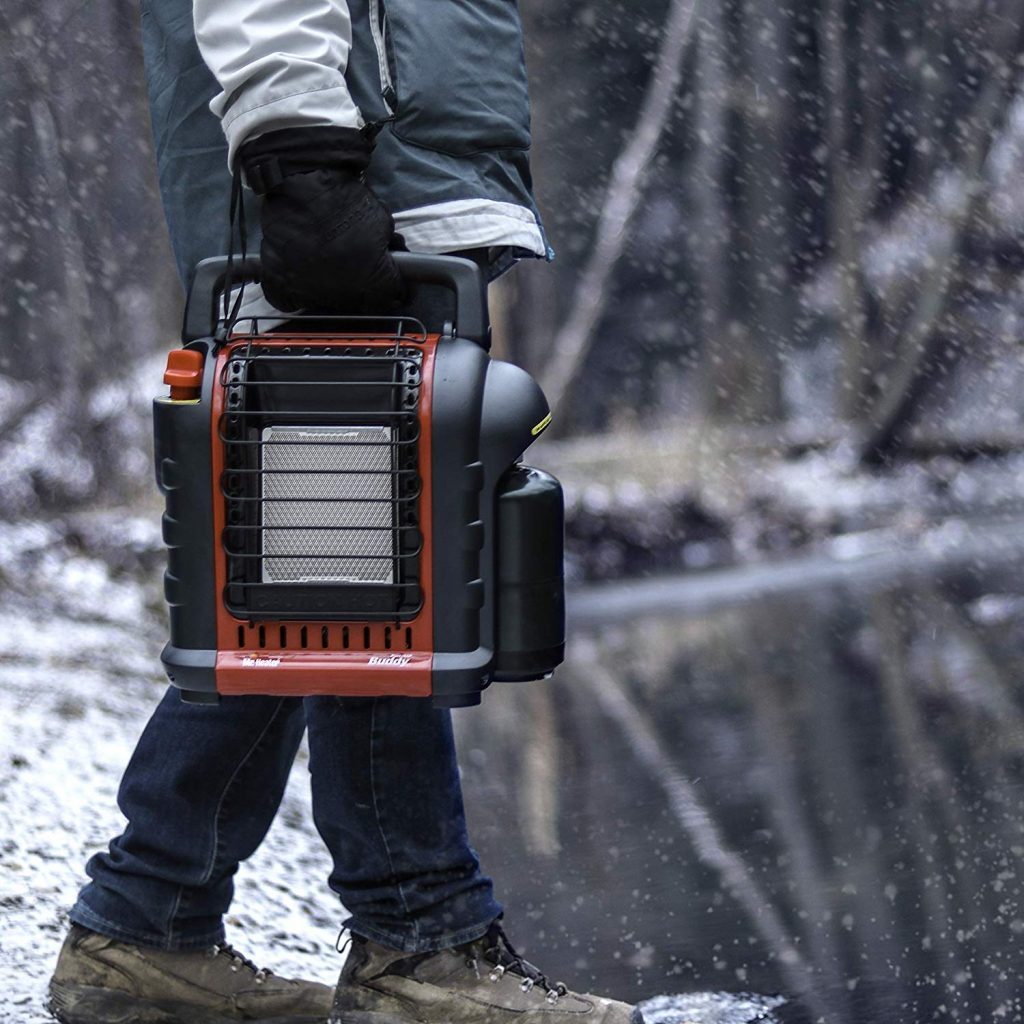
With propane powered tent heater you don’t have to bother about electrical hookups, and it can go for hours.
Some propane powered heaters come with an oxygen depletion sensor and will turn off automatically when tipped over. These security measures lessen the risk of fire and carbon monoxide poisoning. Nevertheless, you should always bring a carbon monoxide detector.
It is worthwhile to remember that if you use a propane heater inside a tent, you should always vent your tent! For proper ventilation, open one or more window flaps.
Catalytic Heaters
These types of heaters are excellent for use in many hazardous areas because they provide heat without using a flame. They run on fuel such as natural gas or propane and get started with a built-in ignitor.
Catalytic portable heaters are not very popular among tent campers. Nevertheless, some tent campers use them because of the large amount of heat they can generate without using any electricity.
Candle Lanterns

A nice option to heat a tent a bit is with candle heaters. They are lightweight, compact, and reasonably priced.
Although they bring coziness to the place and do get warm, on the other side you should not count on them to raise the temperature in your tent by more than a few degrees.
Besides, there is always a chance that a candle can tip over and set something on fire, just like when using any candle. So please, make sure you are not leaving your candle heater unattended.
Additionally, when lighting candles inside a closed environment, do not forget about the proper ventilation. The candles use up oxygen, and any burning could result in carbon monoxide. As opposed to propane heaters, the candle flame is small, thus less ventilation is required.
Wood Burning Heaters
Only canvas tents with exhaust openings can be used with a wood stove. If there is no way to vent the exhaust, you will surely get carbon monoxide poisoning.
Battery Powered Heaters
Well, you are going to have to spend a small fortune on a portable power station because these heaters use an absurd amount of energy to operate. And cheaper power stations won’t be able to keep your tent heater running for very long.
Safety Guidelines On Heating Tent With Tent Heater
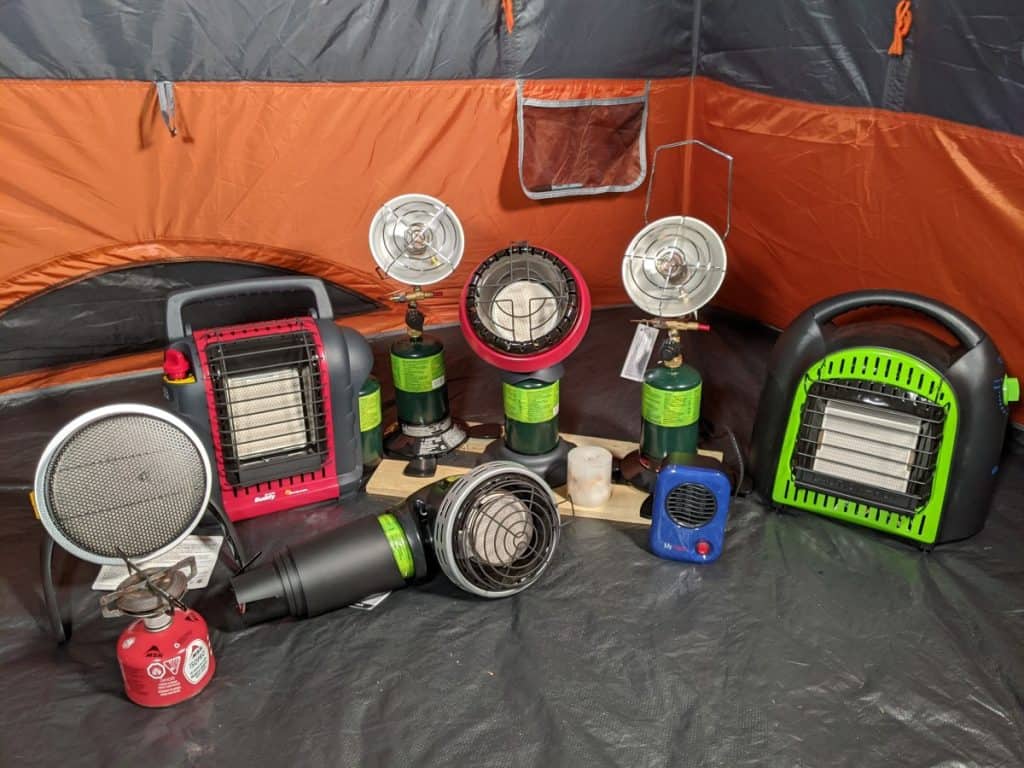
Due to safety reasons, I want to sum up all of the precautions I described above:
- Check if your heater is indoor-safe. There are a lot of camping heaters meant to be used outdoors only. If you want to use your heater to heat a tent inside, make sure it has an “indoor-safe” label. Additionally, look for a tent heater with a tip-over shut-off mechanism and low-oxygen sensor safety features to avoid carbon monoxide risk.
- Vent your tent properly. To use a camping heater safely, proper ventilation is a must. You need to create a constant flow of fresh air using window flaps. Especially propane heaters, or any other tent heaters with open flame may result in carbon monoxide poisoning if not used according to safety regulations.
- Know where to place your heater. You should follow the instructions in your tent heater manual. A heater should be set up on a flat and stable surface a few feet away from anything that can catch on fire or melt.
- Use a carbon monoxide detector. Always use a carbon monoxide detector when your heater is on. Make sure the batteries are fresh and the detector works properly every time you are using your heater.
- Shut off your heater before going to bed. You should never use tent heaters while asleep. In case you want to have a heat source during cold nights, use heat packs in your sleeping bag.
- Never use a camp stove as a substitute. They lack several safety features that camping heaters have. Most camping stoves are for outdoors cooking since they emit carbon monoxide.
How to Heat a Tent Without Electricity
There are a few methods to heat a tent without electricity. I described some techniques a bit earlier in the article, like getting a tent heater, insulating your tent, keeping yourself warm, and placing your tent in the right location. Additionally, there are some natural resources generating heat.
First, you will require a heat source, for example, fire. Next, you should look for a substance with high heat capacity. Something that will be able to retain and lose heat over time. Such substances can be water and stones.
Use Hot Stones to Heat a Tent
Stones can retain heat for a long time and have a good specific heat capacity. What you should do carefully is to find a way and place in your tent to keep hot stones so that the tent floor or anything else in your tent does not melt.
For this purpose, you can use cookie sheets or a variety of materials, such as towels, wool socks, and leather bags.
First, heat the stones next to your campfire, or, if the fire is not too big, you can put the stones directly in the campfire. The stones ought to be solid, slick, and dry.
SAFETY NOTE! Avoid using wet stones or boulders that are too close to a river since they may have water inside. The water expands to considerable pressure when heated and may explode.
When the stones are too hot to handle with your hands, wrap them in a towel or any other material before putting them inside your tent. If you decide to put hot stones on the cookie sheet, use a sturdy stick. Then carry the cookie sheet to heat your tent. Place it so that nothing will fall on it and that it is out of the way.
The bigger the stones and the closer they are to each other, the longer they will radiate warmth.
If you wrap a few stones in a sock, you may put them directly into your sleeping bag and stay warm.
Hot rocks will not make your entire tent super hot. But it is a good method to make the temperature a few degrees higher.
Use Water to Heat a Tent
Water has a very high heat capacity which makes it an ideal heating element. You just need to make sure you store water in heat-resistant containers that do not leak.
The use of a hot water bottle is similar to the use of hot rocks. Both of the elements eventually release heat, but the plastic container cools down quicker than the rocks do, so you might repeat the process of heating the water more frequently.
To use this technique you will require metal water bottles or heat-resistant plastic bottles. The bigger and the more the better.

To pre-warm your sleeping bag before bed, simply heat some water on your camping stove or campfire, gently pour it into your hot water bottle, and then set it inside your tent.
SAFETY NOTE! Make sure the bottles do not leak and they will not melt the fabric.
When they are extremely hot, you can wrap them in a thin towel or shirt, which you can then remove once they cool down a bit.
As with the hot rocks, hot water bottles will keep warm longer if you place them close or touch each other. And this technique will not heat your tent tremendously. It will just add a few more degrees.
You may also bring one of the bottles into your sleeping bag after it cools down a little bit.
Summary
Even though some might hate the cold, winter camping is great. In this article, I described my favorite techniques to heat a tent while camping in cold weather. Having an insulated tent, a tent with a stove jack, or investing in propane or candle heaters can help you stay warm in the winter.
Additionally, you should position your tent in a sensible spot that isn’t too windy. To keep your tent warm during the night, you can use hot water or stones.
And of course, pay attention to keeping warm by wearing high-quality clothing and equipment. Happy Camping!
Your Turn
How about your experience heating a tent in cold weather? Looking forward to hearing your stories in the comments below.

My name is Olivia Kellison. I have been camping with friends and on my own for a long time. For me, camping is a great way to escape everyday life’s chaos. I started this blog because I have always had a passion for the great outdoors, and here I am gladly sharing what I know with other outdoor enthusiasts. It does not matter whether you are an experienced adventurer, or just planning your first trip, my blog will be of great help to you.

